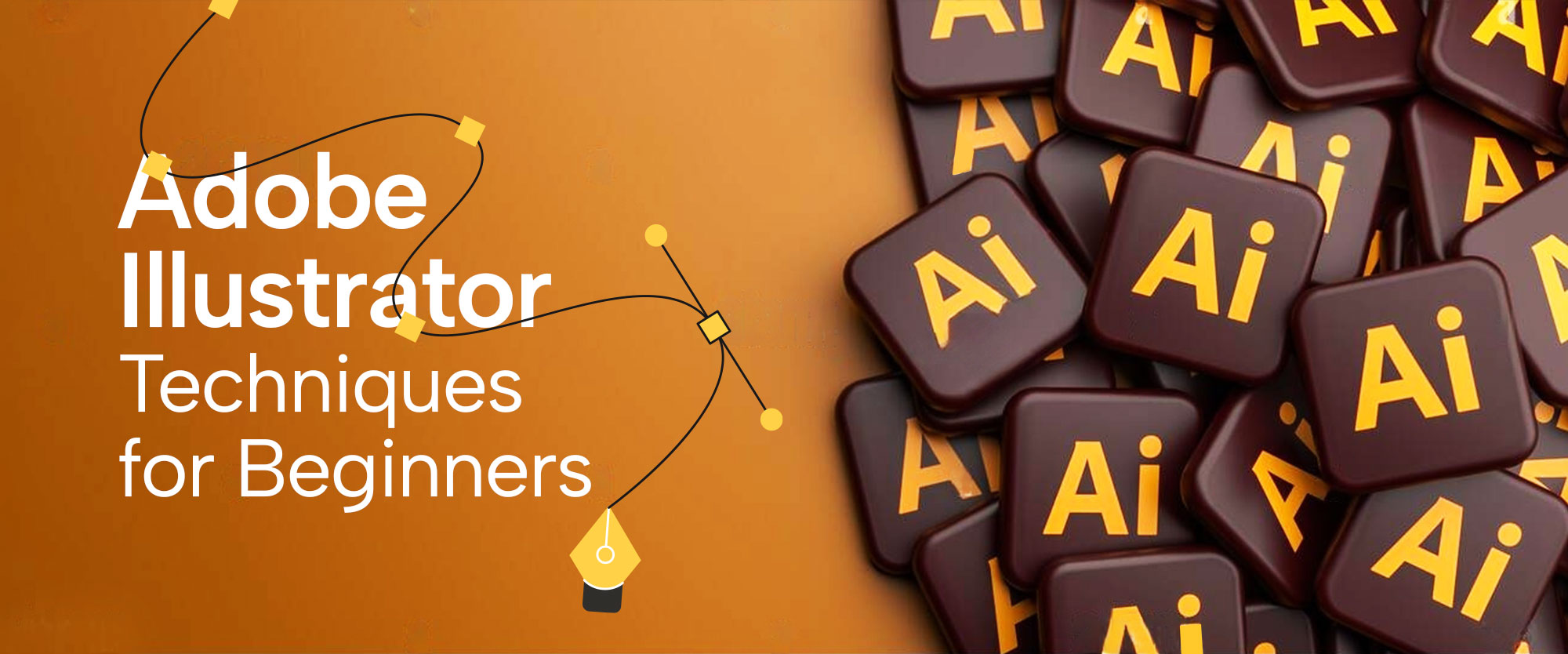
Adobe Illustrator Techniques for Beginners
.eAdobe Illustrator is one of the most popular, dependable, and feature-enriched design programmes for producing vector graphics, sketches, drawings, and other related artworks. VFX courses cover Adobe Illustrator and Photoshop techniques and several tools are available through the curriculum for high-quality design tasks. You’ll get hands-on experience in producing beautiful designs from your creativity with brushes, special effects, layers, filters, colour processing, gradient effects, and drawing tools. The programme seamlessly connects with other Adobe products and allows you to quickly apply finish touches to compositions. Moreover, it is a component of Adobe Creative Cloud.
As commercialization of Adobe’s internal typeface development software and PostScript file format. Adobe Illustrator was developed at the beginning of 1985. Illustrator began as a complementary product to Adobe Photoshop. While Illustrator excels in typography and logo design, Photoshop is more focused on digital photo manipulation and photorealistic techniques of computer illustration. The product was referred to in early magazine adverts as “Adobe Illustrator”. Version 1.7, known as Illustrator 88, debuted a number of brand-new tools and capabilities in 1988.
A robust image-tracing engine is used by Adobe Illustrator. This gives you more time to perfect your design abilities while keeping your designs precise and clean. For instance, you have more control over opacity and location when dealing with gradients on objects or strokes.
Basic Functions of Illustrator
Adobe’s first-ever software programme, Illustrator, was made available for the Apple Macintosh in the late ’80s. One of its most important features was the pen tool, which allowed users to create high-resolution objects and images and to draw smooth curves. Initially, Adobe started implementing Illustrator with home computers that run Microsoft Windows. This was indeed a huge leap on their part and in order to compete with Adobe’s PostScript fonts, Apple and Microsoft were forced to invent something as a counter effect, as a result, they ended up inventing the TrueType font system, which Illustrator now supports. It came with advanced drawing tools, a wide range of drawing “layers”, and support for three-dimensional figures along with enhanced usability by bringing its user interfaces closer together.
To select, create and manipulate objects or artwork in Illustrator, use the sidebar that displays at the left of the screen. The following tools are available for selection: graph, typing, painting, reshaping, slicing and cutting; symbolism; moving and zooming. The toolbox icon that contains several tools appear as a tiny triangle in the bottom right corner. Holding down the mouse button on that little triangle allows you to access or expand several hidden tools. Basic Illustrator tools include, for instance, selection, paintbrush, pen, and pencil tools. Selection tools are mainly used to lay out, alter, and arrange artwork.
Difference between Illustrator and Photoshop
With both Illustrator and Photoshop, you may create stunning, accurate designs and graphics. Their creation process makes a difference. As Illustrator images are constructed of points, lines, and curves rather than pixels. They may scaled up and down indefinitely without losing clarity or sharpness. The user can make use of these vector drawings in any format or size, digital or print as they like.
In contrast, Photoshop is excellent for handling, editing/re-modelling photographs and producing pixel-based, or raster, visuals.
Illustrator works with vectors or Photoshop built on pixels.
Photoshop uses pixels to produce images and a raster-based. The programme was first created for photographers, but over time it has expanded to support many types of artists in producing a wide range of work. The initial purpose of Photoshop was for editing and producing photographs for publication, but it is now known for making interface designs, web pages, banner ads, and video graphics.
Photoshop seen as a one-stop shop. Because of how much it can accomplish and how simple it is to learn, but it is not the greatest application for all forms of artwork and design.
In order to draw flawlessly smooth lines, Illustrator uses vectors, which are simply points. This software is used to produce and modify vector-based content, including graphics, logos, and other design components. When it comes to clarity and sharpness, vectors are scalable pictures that may be made as small or as huge as you need them to be.
Using Illustrator have some limitations. Because it not recommended for making multi-page documents. Photoshop has a method for setting up master pages that are not available in Illustrator. When creating documents using templates, you must utilise this tool. Moreover, you cannot automate page numbers in Illustrator.
More about Illustrator
If a vector graphic is scaled up or down, its quality will never be compromised. As Illustrator is not resolution-dependent, it will also produce better print results for you. Typical vector file extensions are AI, EPS, and SVG. The ideal uses of Illustration are in:
- Freehand illustration Design of logos and icons
- projects that include a lot of line drawings (for example, graphs and charts)
- Bespoke fonts and typography
- Bespoke font creation
- Scalable work that may applied to a variety of platforms and products
- production of infographics
- Printed materials with a lot of types
Illustrator’s benefit is in graphics production since you sketch images and enhance this work using the tool. Drawings are more than just pretty pictures on a screen. Illustrator is the perfect tool for artists, illustrators, and anyone who enjoys drawing because it offers freehand drawing and colouring possibilities in addition to line drawing and typography tools. Businesses that need to design logos and icons for their marketing materials might also benefit from using Illustrator. Illustrator is web designers’ favourite pick when it comes to general designing, for generating logos and pictures for banners and websites. Artists use illustration’s line-drawing to create charts and freehand drawing
Conclusion
You’ll discover that while some people simply prefer using one software over another, there are instances when using Photoshop and Illustrator together is optimal. Because both programmes share many hotkeys and functions, it’s critical to grasp how to use each programme. There is no doubt that one programme is superior to another; they are simply unique in their own ways. Knowing the distinctions between Photoshop and Illustrator will assist you in selecting the right programme for your upcoming job. VFX lessons in the VFX course syllabus usually begin with the technical comprehension of Adobe Photoshop and Illustrator. Join a good VFX institute in your area to comprehend in-depth lessons in Illustrator and Photoshop. Make a decision, then begin learning! After all, Designing is all about combining creativity with enjoyment.



